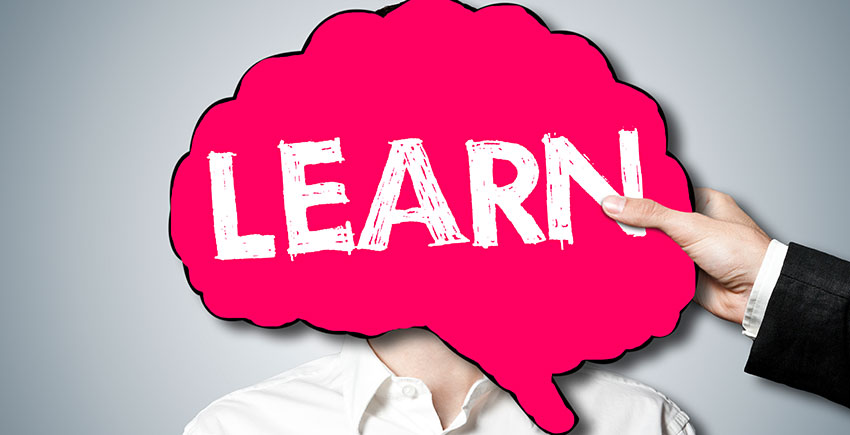How to Memorize by Using Your Learning Style

In a previous article, I have written about ways to improve your memory by using specific skills. You have learned the car method, the peg method, and mapping. You have learned how to use your imagination and create your own stories to memorize information.
You may have surmised that these methods work for anyone, no matter what their level of intelligence is. This is true. If you can form pictures in your mind, you can use the methods, no matter what your intelligence is. Yet there is one difference with people in their ability to memorize.
Until now, all of the methods that I wrote about involve picturing things. They have been geared towards visual learners. Some studies have shown that about 80% of the population are primarily visual learners. But there are other learning styles. About 15% of the remaining people are kinesthetic learners. The remaining 5% are auditory learners.
We all use all five of our senses. Visual is seeing, auditory is hearing, kinesthetic is feeling with our bodies, olfactory is a smell, and gustatory is taste. Most of us know that visual is seeing and auditory is hearing. To remember olfactory, think of a smelly old factory. To remember gustatory, think of disgusting. Was there ever a time when you felt so disgusted that you could not eat? That is the origin of the word. For kinesthetic, think of two football players who are cousins, so they are kin for kinesthetic.
Your learning style is determined by which sense you use the most. It is not completely understood how each of us develops their primary sense, but it is believed that it starts at a young age. Although we do not know how it develops, there are ways that you know which one is your primary sense. Only three of the five become people’s primary—visual, auditory, and kinesthetic.
Visual learners are fast talkers. They think in pictures, so they try to get every detail in as quickly as possible. Artists, fashion designers, web designers are all visual learners. If you appreciate beauty in natural scenes, pictures, and fashion more than you appreciate sounds or touch, you are likely a visual learner.
Auditory learners perceive the world through sounds. Musicians, singers, and good speakers are auditory learners. They often speak at a good pace and speak clearly.
Kinesthetic learners are more attuned to their bodies than the other learners. They relate to their physical sensations more than they do to pictures or sounds. Athletes, massage practitioners, and fitness trainers are kinesthetic learners. Often athletes speak more slowly than most people. This says nothing about their intelligence and everything about their kinesthetic learning style.
Before the 1980s, school systems catered to auditory learners. Most of the teaching was lecture, and there was no power point. In the 1980s, research in education sought to help reach children of different learning styles. Previous to then, visual learners only had the blackboard (now whiteboard) or worksheets in a class. Kinesthetic learners only had their learning style addressed in gym class—or science class if they worked with chemicals and weights. Kinesthetic learners often grasp learning if they can manipulate objects.
Now the schools cater to visual learners through powerpoint presentations. They cater to kinesthetic learners through experiential learning. Even manipulating the computer can be a plus for the kinesthetic learner.
Most people use all five of their senses; one predominates with each person. I have given some examples. Yet some people seem to have more than one main sense that they use. I have known people who are artists but also work in construction—so, would that be visual or kinesthetic? Probably both. Politicians need to be able to appeal to all three of the main senses. They have to look good, speak well, and move people’s emotions. Emotion is another component of the kinesthetic learner. They are not only aware of how the shower feels on their bodies, but they are aware of how they feel at all times. This is why the word ‘feel’ means both physical and emotional.
Let’s use an example of how you can remember using your primary learning style. Imagine there is a fire burning, and you stand near the house watching. The fire truck arrives, and a redheaded man steps out named Peter Burns. Then he greets his two boys. One of them carries a cat, and his name is Pat. The other carries a snake, and his name is Jake (notice the rhyming). Then a lady arrives with a bottle of liquor, and her name is Sherry.
If you are a visual learner, you will picture everything. Picture the fire, and the house burning is easy for you. Then picturing a man with rabbit ears and red hair makes you think of Peter and burns. Picturing the boy with the cat and the boy with the snake gives you the clue that it is Pat and Jake. Imagine the lady, and the sparkling Sherry bottle will remind you that her name is Sherry.
Now for the auditory learner: Auditory learners are the ones who can do okay with the rote rehearsal method where you repeat the information out loud or in your head. So you think the words ‘house on fire.’ Then you say to yourself, “Peter the fireman has red hair, so his name is Peter Burns.” Then the boys come. You think Pat rhymes with cat, Jake rhymes with a snake. Then say, “Sherry is the drink that is in the bottle that the lady is carrying.” Her name is Sherry.
Kinesthetic learners emphasize how they feel about the situation. First, when they think of the fire, they imagine how they would sweat and feel hot standing next to that fire. Then they would feel relief when the fireman Peter Burns arrives. I know his name and appearance lends itself to a connection. Then when the boys arrive, the kinesthetic learner can imagine the feel of the fur if they pet the cat the boy carries. This helps them make the connection Pat, Cat. Then imagine the less pleasant feel of the scales of the snake. They could also imagine getting bit by the snake. Although this would be unpleasant, it has the emotional significance to help the person remember. Then they could imagine the cold feel of the Sherry bottle.
Keep in mind that although you have your primary sense, you still use all your senses to improve your memory. You just use your primary sense more. For example, the kinesthetic person will still make the pictures of the fire and the people. They will use their feeling images to help them picture and make the connections.
In a previous article, I discussed how Rote Rehearsal is not the best way to memorize. That is the technique that most people use. They just repeat the information over, and they hope it will stick. The only people whom that works for are the auditory learners. Auditory people hear things in their head well, and the sounds remain in their memory longer than visual and auditory people. Yet it is still helpful for auditory learners to use their imaginations and use the techniques.
Perhaps you have read this far and are not sure what your primary sense is. You may think, I like playing sports, but I also play an instrument. Some people are less discriminatory as far as their main sense. My recommendation to you is to try different things in your imagination. You may actually be at an advantage because you can improve your memory more easily. This is because you have more imaginative resources than most people.
This last segment of this article may seem to contradict the idea that has been presented. The pictures you create in your head to improve your memory may actually help you the most if you use all your senses to create the pictures. There are meditative techniques that tell you to imagine a pleasant place to be. You picture the sights, hear the sounds in your mind, feel the sensations, smell and taste things. With relaxation, as well as the memory, you do what works for you.
Although most people would not say that their main sense is smell or taste, many people have a highly developed sense of smell and taste. If you are a person who lights candles at home and likes to cook, you have highly developed senses of both those. Studies have shown that the olfactory sense is the strongest for evoking memories. Memories of events or autobiographical memories. If you ever returned to a place where you used to live or your old school building, scents particular to that brought back a feeling or a memory that you had not felt or thought of since you were there.
The use of your senses is a great tool to help you memorize information. It adds to everything you knew already about memory improvement.




